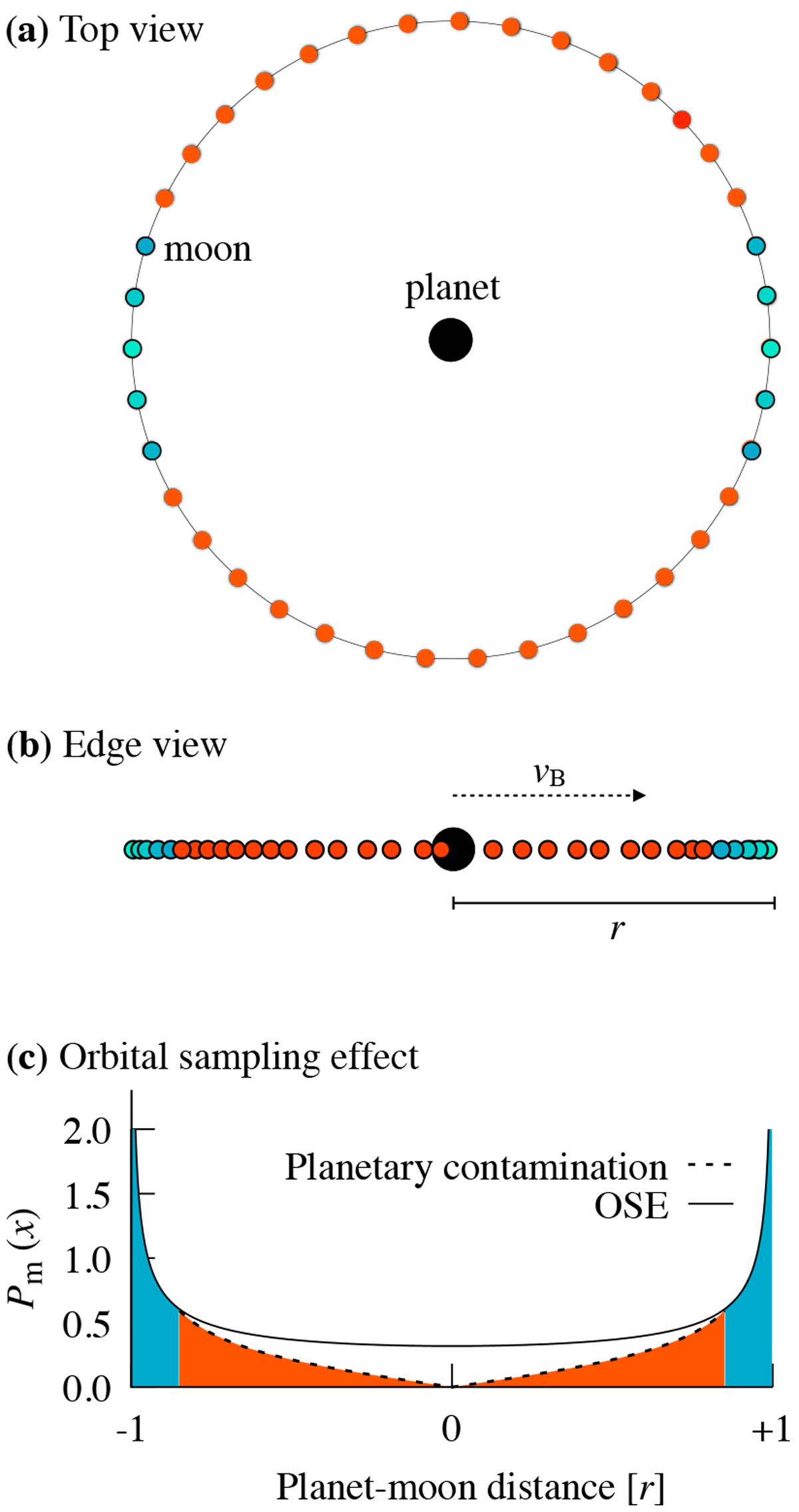Fig. 2

Download original image
Orbital sampling effect of a moon around its host planet with the planet in the center of reference. (a) In a circular orbit, the probability to find the moon at any given location along its orbital path is equal everywhere. If the moon’s position were sampled many times, the samples would distribute homogeneously along its orbit. (b) As a result of a projection effect, however, the samples would pile up toward the edges of the moon orbit if seen from the side. If the moon orbit is wider than the transit path across the star (blue moons), then the corresponding moon transits canbe unaffected by planetary transits. (c) If the moon exhibits sufficiently wide deflection from the planet, the corresponding in-transit data can fully contribute to the fraction of the moon’s phase-folded in-transit data in the light curve (blue area). Moon transits closer to the planet are increasingly more contaminated the closer the moon is located to the planet. The curve assumes that the transit chord equals 85% of the planet-moon separation (2p∕r = 0.85), a stellar radius of 50% of the planet-moon separation, and an impact parameter b = 0.5.
Current usage metrics show cumulative count of Article Views (full-text article views including HTML views, PDF and ePub downloads, according to the available data) and Abstracts Views on Vision4Press platform.
Data correspond to usage on the plateform after 2015. The current usage metrics is available 48-96 hours after online publication and is updated daily on week days.
Initial download of the metrics may take a while.


